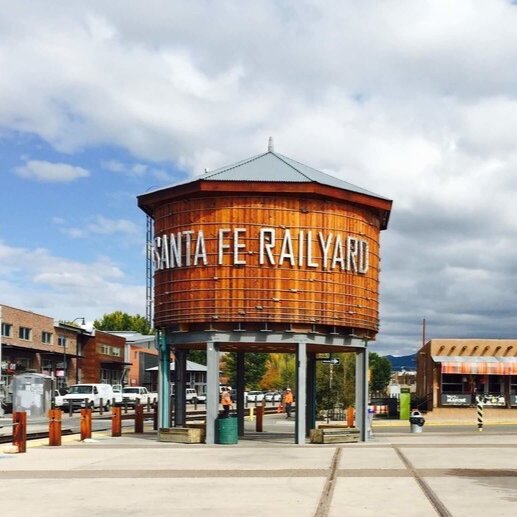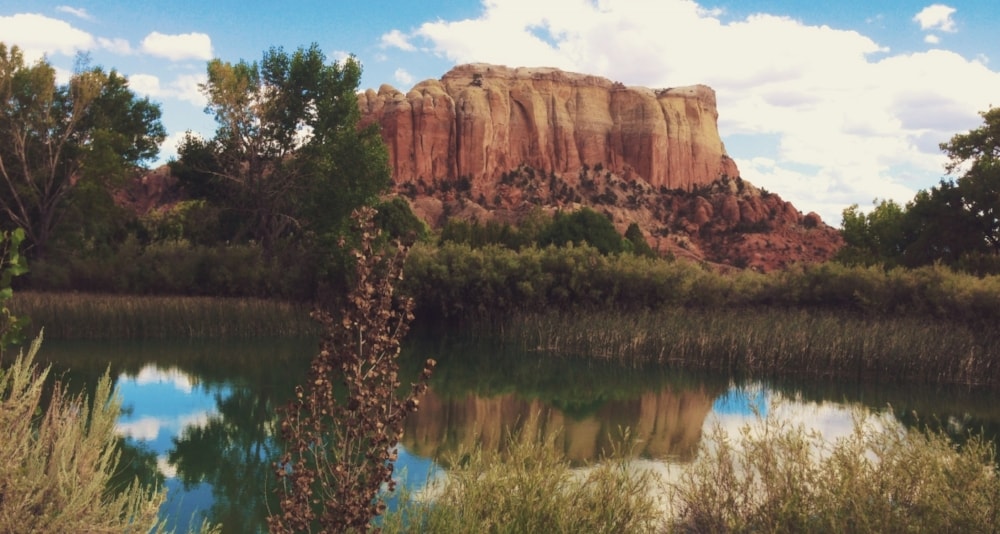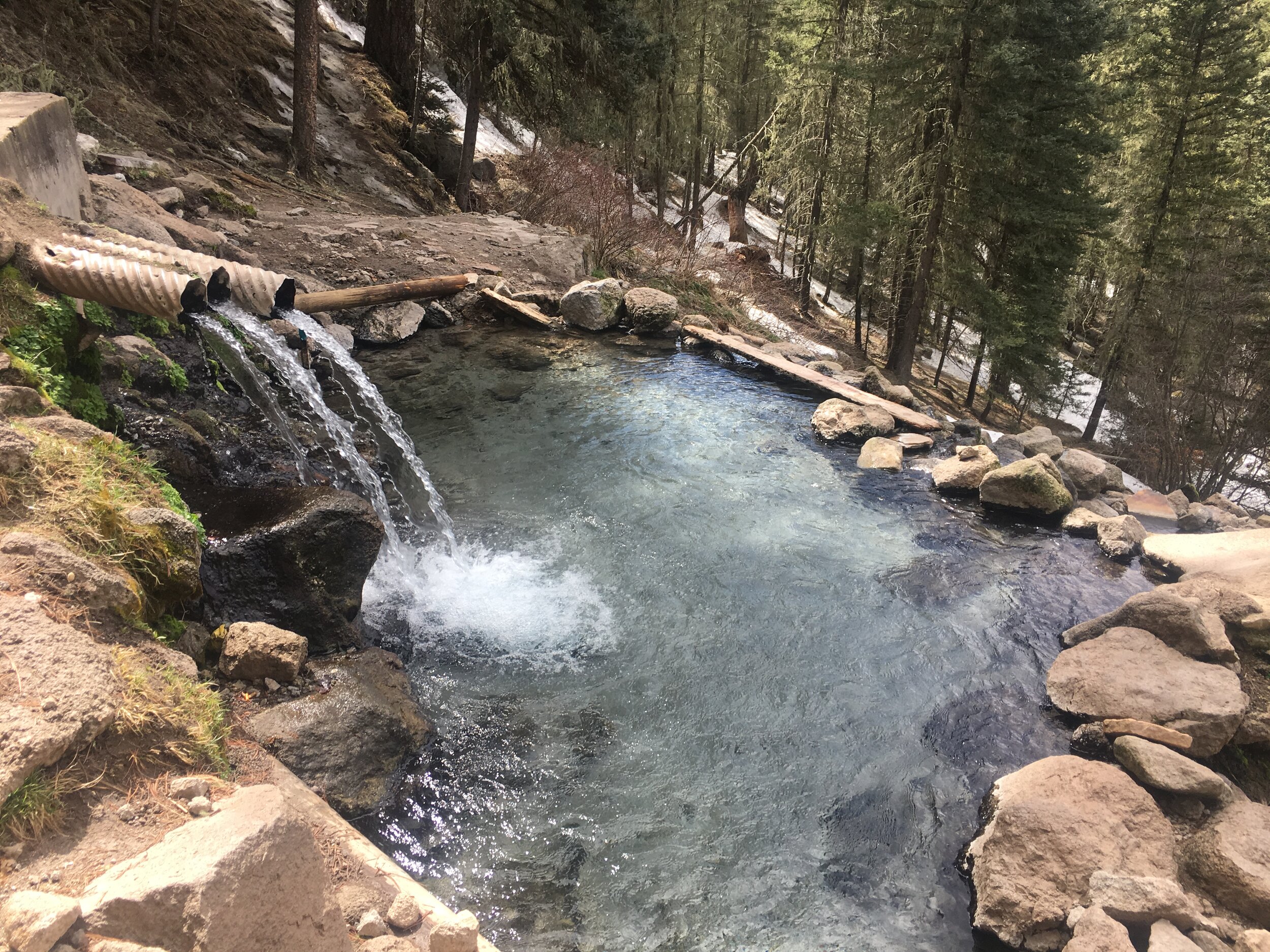How to Prepare for Santa Fe Elevation
Did you know Santa Fe is at a higher elevation the the “mile high” city, Denver? Santa Fe stands at a little over 7,000 feet above sea level, making it the highest capital city in the United States. While most Santa Fe residents are well-acclimated to the elevation, it can take visitors by surprise. Even if you don’t feel the effects of the elevation right away, you might find yourself out of breath after climbing a flight of stairs or exhausted after a short hike. Luckily, there are a few simple things you can do to prepare yourself for the elevation and make sure that you can enjoy your trip to Santa Fe to the fullest.
Our Top Tips
• Protect yourself from the sun
• Stay hydrated
• Take it easy and pace yourself
1. Pace Yourself
It normally takes a few days for your body to adjust to the elevation. During your first few days in Santa Fe, you may find yourself getting more out of breath than usual, growing tired more quickly, and becoming dehydrated faster. This is a totally normal response to Santa Fe’s high elevation and dry high desert weather. When visiting Santa Fe, it’s usually a good idea to plan less strenuous activities for your fist few days in town, and save long hikes or walks for after you’re more used to the elevation. Keep in mind that some of the mountain hikes involve even more elevation - the very popular Nambe Lake hike, for example, is entirely above 10,000 feet.
When hiking and walking around Santa Fe, it’s important to remember to listen to your body and pace yourself, especially if you’re not used to the altitude. At high altitudes, there is actually less oxygen in the air, which can make it more difficult for the body function until it has fully acclimated to the elevation. You may find yourself getting tired more easily, or not being able to hike or walk as far as normal.
2. Drink Plenty of Water
It’s especially important to stay hydrated when you’re at a high elevation. This is because you actually get dehydrated more easily when living at high altitudes, due to the dry air and more rapid breathing. When you’re so high up, the sun is also much stronger, and since Santa Fe experiences over 300 sunny days per year, it’s easy to dry out and get dehydrated without realizing it. We recommend drinking a glass or two of water when you wake up in the morning, several glasses throughout the day, and an additional glass or two before you go to bed each night. It’s also a good idea to carry water bottles with you wherever you venture to throughout the day, and take frequent water breaks to make sure you’re staying adequately hydrated.
3. Wear Sunscreen
Sunny Santa Fe skies can have painful consequences if you’re not prepared. The sun is much stronger at high elevation than it is at sea level, and you run the risk of sunburn if you’re out in the sun for any sustained length of time. It’s a good idea to wear sunscreen on any part of you that will be exposed to the sun, especially your face and shoulders. If you plan on going on a long hike on a sunny afternoon, it’s a good idea to apply sunscreen in advance so that you’re protected from the sun. Even during the winter time, it’s often a good idea to apply sunscreen before skiing, snowshoeing, or hiking, as the sun can often reflect off of the snow and cause painful burns even in colder weather.
4. Pack a Hat and Sunglasses
Along with sunscreen, a hat is great protection against the hot New Mexican sun. Wearing a hat can help to protect you against the sun, cool you down, and make sunny Santa Fe days much more tolerable. Sunglasses are also a good idea, and can make it easier to take in the sights whether you’re driving or just walking around the city. And don’t worry - if you forget hat, sunglasses, sunscreen, or other important travel items, you can always pick some up once you reach Santa Fe.
5. Skip that extra margarita
Many visitors to Santa Fe may not realize that alcohol actually has a much stronger effect on those who aren't yet acclimated to the higher altitude. At over 7,000 feet above sea level, one drink can feel more like three to people visiting from lower elevations. This means that it’s easy to drink more than you mean to without realizing it. Since it’s also much easier to become dehydrated at a high elevation, this can also contribute to drinking more than you should. If you’re not yet used to Santa Fe elevation, it’s a good idea to drink in moderation and only have one drink to start. It may hit you harder than you realize at first! Be sure to drink responsibly, and get a ride with a friend or a ridesharing service if you’re too drunk to drive.
6. Get Enough Sleep
Getting a solid night’s sleep can go a long way towards fighting the symptoms of elevation sickness, and can make sure that you are rested and refreshed after long days of exploring the Land of Enchantment. Since elevation can sometimes make it harder to get to sleep, it’s important to get to bed at a reasonable time and try to get a full night’s sleep so that you can enjoy yourself to the fullest. If you’re having trouble sleeping, a cup of herbal tea from nearby ArtfulTea can help you to catch up on your zzz’s.
Santa Fe and Altitude Sickness
In rare cases, people who are unaccustomed to the elevation change after traveling to Santa Fe may experience elevation sickness. Symptoms may include shortness of breath, headaches, nausea, and dizziness. While many travelers experience a very mild version of these symptoms, in some unlucky visitors the symptoms are more acute. While drinking water, pacing yourself when it comes to exercise, and taking breaks can go a long way towards alleviating elevation sickness, in some cases more serious treatment is required. Be sure to get in touch with a medical professional if you’re experiencing serious symptoms.
Pro Tip: Hit the Oxygen Bar
Not feeling well after you’ve arrived? Or looking for something slower paced and relaxing during your first day or two acclimating? Consider an oxygen treatment at the Santa Fe Oxygen and Healing Bar. In addition to offering oxygen treatments ranging from 15-30 minutes, they also offer a number of healing packages and excellent health food at their onsite Apothecary restaurant.
Summing Up
Visiting Santa Fe’s high-altitude beauty can be a life-changing experience—especially if you come prepared. Taking it slow, staying hydrated, and giving yourself time to adjust ensures you’ll enjoy every moment. Once you’ve found your footing, dive deeper into the spirit of Santa Fe by joining one of Wander New Mexico’s acclaimed food tours. It’s the perfect way to savor authentic local flavors while discovering the city’s fascinating history and culture.
At Wander New Mexico, we have a passion for telling stories and creating unique gastronomic experiences that allow people to connect through food.
Join us for authentic, immersive food & history tours that allow our guests to experience New Mexico’s unique food culture, rich flavors, and intriguing history!












